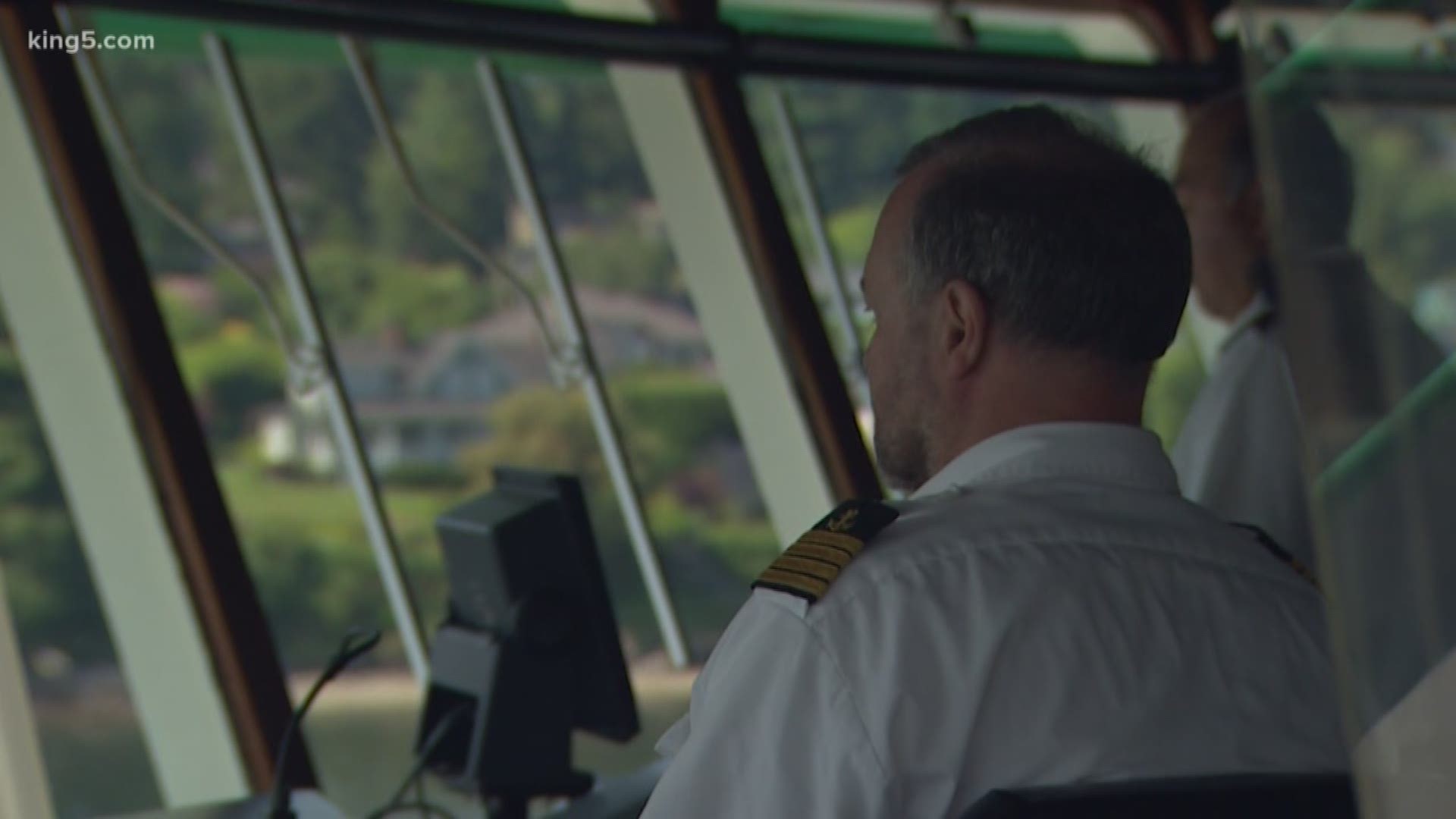Editor's note: The above video previously aired on KING 5 about how ferry staff spot hazards while on their route.
Washington State Ferries is making waves with plans to convert its largest ferries to run on hybrid-electric battery power instead of diesel fuel.
Washington state was allocated $112.7 million as part of a federal Volkswagen settlement, in which Volkswagen violated policies of the Clean Air Act by installing illegal software to cheat emission tests on many of its diesel vehicles.
Under the settlement, the money can be used in projects to replace or repower eligible vehicles, vessels, and equipment with greener forms of power.
The Department of Ecology, which oversees investing the settlement funds, approved $35 million of that settlement to WSF to help convert the first of its three largest ferries into hybrid-electric propulsion operating vessels.
“Air pollution from diesel emissions is one of the most pressing public health threats facing Washington,” said Ecology Director Maia Bellon. “Converting these ferries to hybrid propulsion will slash pollution in our state.”
Other sources will fund conversions of the remaining Jumbo Mark II vessels, according to WSDOT.
The three Jumbo Mark II ferries are the Puyallup, Tacoma, and Wenatchee. The ferries were constructed in the 1990s and are due for their mid-life propulsion system replacements, which means upgrading them to electric propulsion will result in minimal service disruptions.
The Jumbo Mark II ferries carry 202 cars and 1800 passengers each and primarily operate on the Seattle/Bainbridge and Edmonds/Kingston routes.
The changes to the Jumbo Mark II ferries mean WSF is closer to meeting the goals outlined in Governor Jay Inslee's Executive Order 18-01, which directs WSF to move forward with a zero-emissions fleet.
“Converting the biggest, dirtiest ferries in the fleet is a huge milestone in our efforts to decarbonize the state and fulfill our obligation to help defeat climate change,” said Inslee. “In addition to reducing emissions, moving to an all-electric ferry fleet will save taxpayers money on ferry operating costs, virtually eliminate engine noise and vibration that can hurt orca whales, and improve reliability of service.”
WSDOT officials said besides cost savings and reduced maintenance costs, converting the Jumbo Mark IIs will also reduce carbon dioxide emissions by 48,565 metric tons per year. That would be akin to taking more than 10,000 cars off the road, officials said.
Hybrid ferries will also cut the emissions of nitrogen oxide, a toxic form of air pollution, by 184.5 metric tons per year once all three ferries are operating with hybrid-electric propulsion, WSDOT officials said.
The vessel conversion design will begin immediately. The planning and design will continue through 2020 and construction will begin in 2021.

